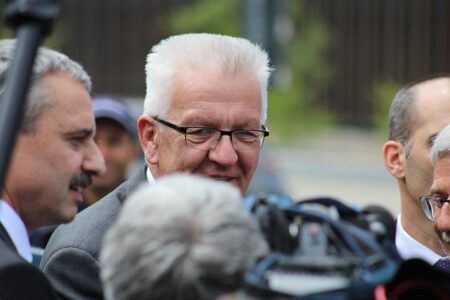Honda’s Pause on Canadian EV Factory: A Reflection of Current Trade Challenges
Honda has recently decided to temporarily suspend its plans for a new electric vehicle (EV) manufacturing plant in Canada.This decision arises amidst rising trade tensions that have sparked concerns regarding tariffs and the overall viability of the market. As the global automotive sector shifts towards electrification,this unexpected turn highlights the intricate challenges automakers face while navigating economic and political landscapes. The halt raises questions about Honda’s dedication to expanding its footprint in North america’s EV market and emphasizes broader implications stemming from ongoing trade disputes that could disrupt supply chains and investment strategies. Stakeholders are now analyzing how this pause might influence Honda’s competitive edge and the future landscape of electric vehicle production in Canada.
Honda Reassesses Its Electrification Strategy Amid Trade Tensions
In a notable strategic shift, Honda has opted to delay its plans for establishing a new electric vehicle factory in Canada due to persistent trade conflicts and tariff issues. This decision reflects a extensive reevaluation of Honda’s electrification strategy as the automotive industry undergoes rapid transformation. Rising manufacturing costs in North America, especially where tariffs could significantly impact profit margins, likely influenced this choice. Analysts suggest that Honda may be reconsidering its investment priorities given these financial uncertainties.
Several key factors appear to have contributed to Honda’s decision:
- Tariff Effects: Increasing tariffs on imported materials may lead to higher production expenses.
- Consumer Demand Variability: Changes in consumer interest toward EVs can affect sales forecasts.
- Evolving Competitive Landscape: Competitors are heavily investing in EV technology,compelling Honda to adapt its strategies accordingly.
Navigating these challenges will require Honda to strike a balance between immediate market needs and long-term strategic goals. Other manufacturers facing similar tariff pressures may offer valuable insights as they adjust their business models within this dynamic environment.
The impact of Tariff Conflicts on Automotive Manufacturing and future Investments
The ongoing tariff conflict has profoundly affected automotive manufacturing across North America, prompting companies like Honda to reassess their operational strategies and investment plans. The recent suspension of their planned electric vehicle factory serves as an example of how these trade tensions can have far-reaching consequences for manufacturers. Fluctuating tariffs on imported goods create uncertainty that directly impacts operational costs and logistical planning, forcing many automakers into difficult decisions about balancing production expenses with necessary investments in green technologies.
Industry stakeholders are closely monitoring several critical factors during this period:
- Supply Chain Interruptions: Manufacturers face delays and increased costs due to disruptions caused by tariffs.
- Cautious Investment approaches: Companies are hesitant about committing resources toward new projects—especially high-tech sectors like EVs—until there is more clarity regarding future conditions.
- Evolving Market Conditions: Rising raw material prices alongside shifting consumer preferences necessitate reevaluations concerning production locations throughout North america.
| Name of Manufacturer | Status Change Regarding Investments | Causative Factors Behind Change |
|---|---|---|
| Toyota | Suspended New Plant Plans | Tariff Instability |
Policy Recommendations for Stabilizing the Electric Vehicle Market While Encouraging Innovation
Aiming at mitigating uncertainties arising from global tariff disputes along with supply chain hurdles, it is essential for policymakers to adopt measures ensuring stability within the electric vehicle (EV) sector. Key initiatives should include establishing robust regulatory frameworks supporting domestic EV manufacturing alongside clear tariff structures designed specifically aimed at reducing risks associated with investments into emerging technologies.
Furthermore, prioritizing support for research initiatives focused on sustainable materials and also battery technology will foster innovation while decreasing reliance upon imports.
Additionally fostering partnerships among government entities along with industry players plus research institutions can yield synergistic advancements within today’s evolving landscape.
These collaborations facilitate knowledge sharing opportunities which ultimately lead towards funding avenues available specifically targeting cutting-edge technologies.
Policymakers should also consider implementing financial incentives geared towards domestic production coupled together with investments directed towards renewable energy solutions; such actions would catalyze movement toward creating resilient diversified markets surrounding electrical vehicles.
Encouraging consumer adoption thru subsidies paired up alongside infrastructure advancement related directly back onto charging stations remains crucially critically important when aiming at achieving sustained growth over time!
Looking Ahead: The Future Landscape Post-Honda’s Decision Regarding Canadian Factory Plans
The recent choice made by Honda regarding halting operations tied into constructing an electrical vehicle facility located inside Canada adds yet another layer onto complexities already present amid current ongoing tariff wars affecting wider aspects surrounding automobile industries globally! As various manufacturers continue grappling against obstacles linked back down through supply chains intertwined deeply rooted geopolitical tensions combined together shifting demands coming forth directly out consumers’ preferences; pathways leading forward become increasingly convoluted! Stakeholders remain vigilant observing closely how such decisions impact not only commitments made by companies like honda but also competitive positioning found amongst others operating under similarly electrified markets! With policy developments constantly evolving coupled together international trading dynamics remaining fluid; futures concerning electrical vehicles manufactured across north america stay uncertain prompting vital inquiries revolving around sustainability efforts put forth alongside innovations being pursued actively adapting legacy giants operating historically within conventional automotive realms!




